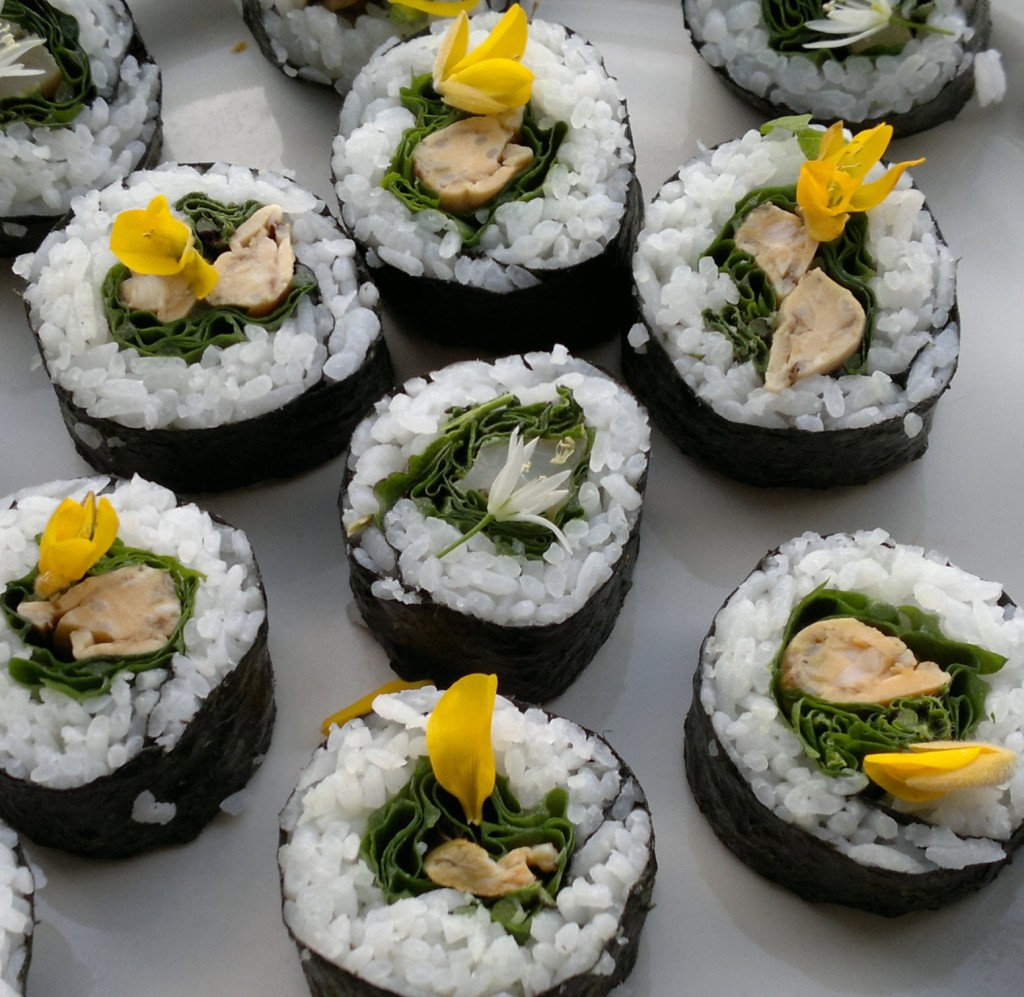Common scurvygrass – Edibility, Identification, Distribution
Cochlearia officinalis
- Edibility – 3/5 – Leaves and flowers. Contrary to nearly every foraging guide, I rate this plant highly provided it is used correctly
- Identification – 3/5 – Small (1-5cm diameter) glossy, heart/kidney shaped leaves with distinct veins on individual stalks growing in low rosettes. The most similar species is lesser celandine which is (mostly) edible, non-coastal and has much less fleshy leaves.
- Distribution – 5/5 – Coastal from strand line to machar and salt marshes, often spreading inland on salty roadsides.
- Season – Biennial/perrenial – mature leaves in spring and summer can be overpowering.
The flavours and textures of some wild foods can be challenging to our modern palettes. We have got used to the easy sweetness of tame vegetables, while importing piquant spices from abroad to make them more exciting. This is a real shame, as we have an abundance of strongly flavoured, health-giving plants all around us that we have lost – or have yet to acquire – the knowledge and skill to use. Scurvy grass is one such plant.
It is a member of the large brassicaceae family, which includes sea kale, bittercress, common and greater cuckoo flower, sea radish, mustards and of course all the very familiar cultivated vegetables that go towards “meat and two veg”. Traditionally, scurvy grass has been the poor relation of all of these and only really makes it into foraging books because it was harvested by sailors to be salted down by the vat-load to help stave off scurvy during long sea voyages. It is jam-packed with vitamin C but I can’t imagine the sailors relishing their daily dose – the flavour is strongly – and potentially overpoweringly – mustardy/horseradishy, which is why it gets such bad reviews.

Scurvy grass. Although this looks very pretty, reddening of the leaves is a sign that the plant is stressed
I find this odd, as other strong wild flavours such as horseradish, watercress and cuckooflower tend to get rave reviews. If used properly as a spice, condiment, pesto ingredient or small proportion of a salad, and at its correct stage of growth, the full-blooded mustardy punch of scurvy grass can be superb. I see it in an even better light as I don’t find wild horseradish in Galloway, so I use it with beef and blitzed down with the infinitely more pungent sea rocket as a wasabi substitute with wild coastal sushi. Kapow! Also, there is no holy law decreeing that “seasoning” must comprise of salt and pepper – try chopping scurvy grass up, drying and crumbling.
Generally, I avoid it or use it in even smaller quantities when its leaves are deep green, thick and fleshy – this generally occurs in spring and summer. When the leaves are small I find them an excellent wayside nibble to tickle the tastebuds – but only a nibble!




3 Comments
I mix scurvy grass in with other salad leaves, goes well in a salad. It is ready to pick now, late January around the Wash but not ready on the Solway yet.
We just found some on the river Towy but its sweet (baby leaves) growing near a field of cuckoo flower brassicae
Should we dry it for seasoning or use in salads ?
Maybe a bit of both…? Its good to experiment and find out what works for you! 🙂